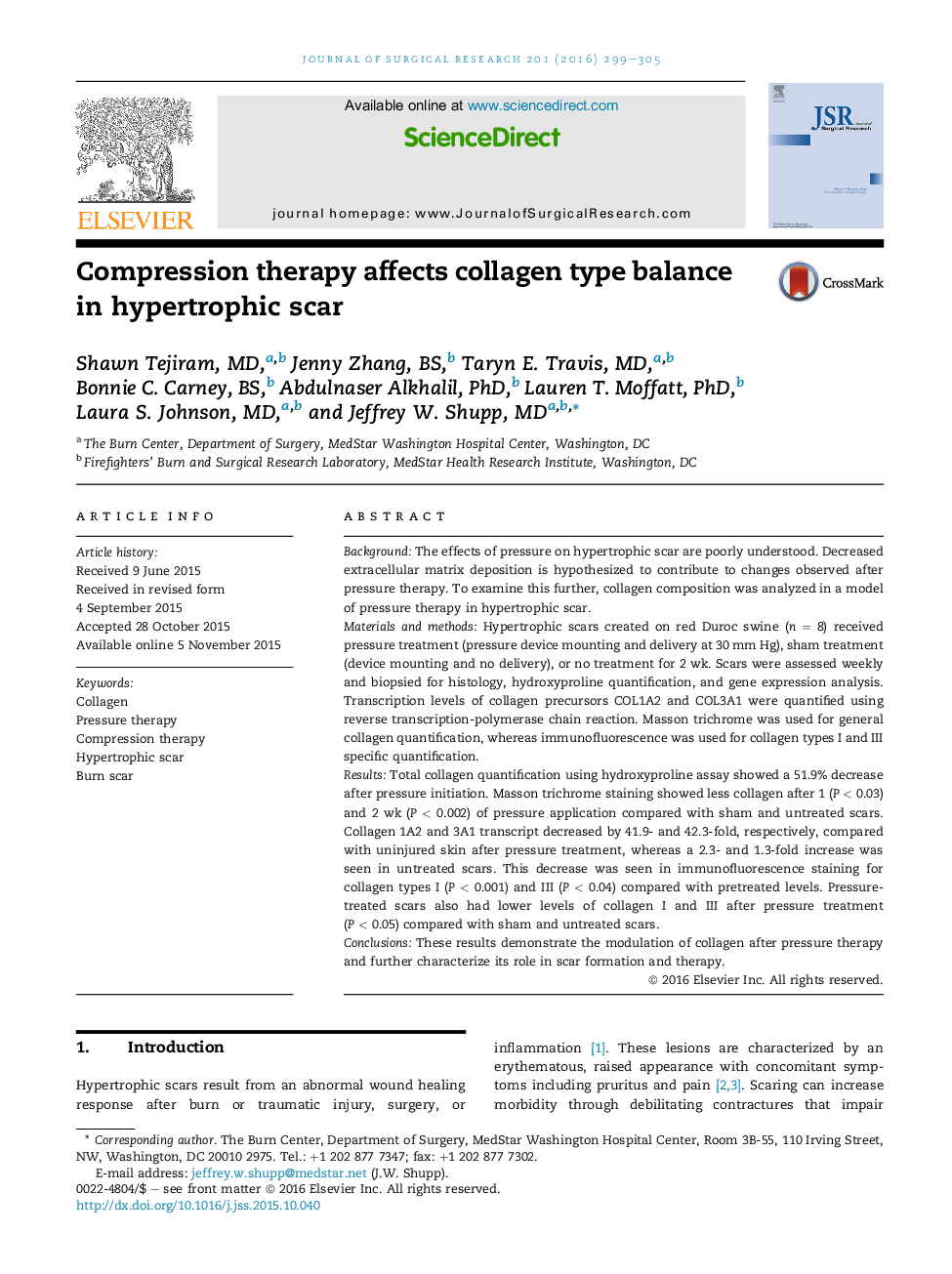| Article ID | Journal | Published Year | Pages | File Type |
|---|---|---|---|---|
| 4299408 | Journal of Surgical Research | 2016 | 7 Pages |
BackgroundThe effects of pressure on hypertrophic scar are poorly understood. Decreased extracellular matrix deposition is hypothesized to contribute to changes observed after pressure therapy. To examine this further, collagen composition was analyzed in a model of pressure therapy in hypertrophic scar.Materials and methodsHypertrophic scars created on red Duroc swine (n = 8) received pressure treatment (pressure device mounting and delivery at 30 mm Hg), sham treatment (device mounting and no delivery), or no treatment for 2 wk. Scars were assessed weekly and biopsied for histology, hydroxyproline quantification, and gene expression analysis. Transcription levels of collagen precursors COL1A2 and COL3A1 were quantified using reverse transcription-polymerase chain reaction. Masson trichrome was used for general collagen quantification, whereas immunofluorescence was used for collagen types I and III specific quantification.ResultsTotal collagen quantification using hydroxyproline assay showed a 51.9% decrease after pressure initiation. Masson trichrome staining showed less collagen after 1 (P < 0.03) and 2 wk (P < 0.002) of pressure application compared with sham and untreated scars. Collagen 1A2 and 3A1 transcript decreased by 41.9- and 42.3-fold, respectively, compared with uninjured skin after pressure treatment, whereas a 2.3- and 1.3-fold increase was seen in untreated scars. This decrease was seen in immunofluorescence staining for collagen types I (P < 0.001) and III (P < 0.04) compared with pretreated levels. Pressure-treated scars also had lower levels of collagen I and III after pressure treatment (P < 0.05) compared with sham and untreated scars.ConclusionsThese results demonstrate the modulation of collagen after pressure therapy and further characterize its role in scar formation and therapy.
